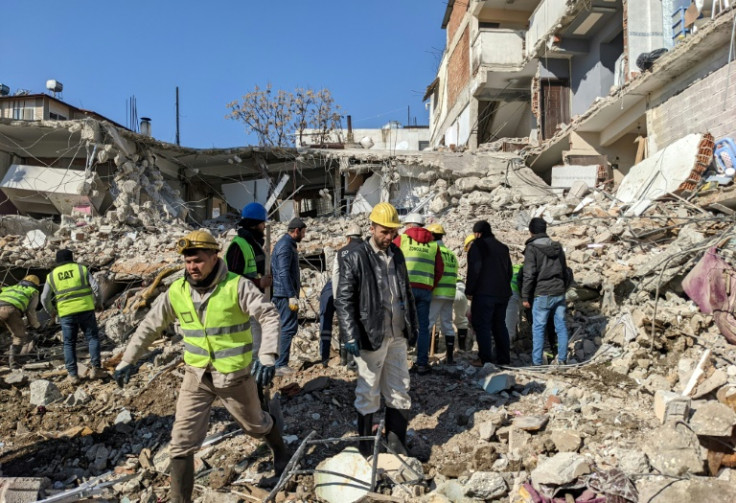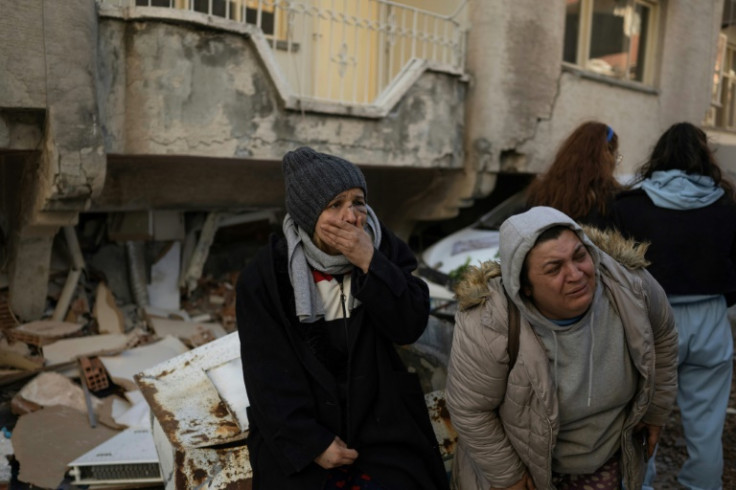Familiar With Tragedy, Turkey Miners Rush To Help After Quake

When miner Ismail Hakki Kalkan saw people buried under the rubble of Turkey's earthquake, he rushed to help despite living on the opposite side of the tragedy-stricken country.
Kalkan, who has been a miner for eight years, said he felt he had more expertise than most digging through rough terrain since Turkish miners are no strangers to disasters.
"When we watched what was happening here on the TV, we knew that we had to be here and we came," the miner from the Black Sea province of Zonguldak said.
Monday's 7.8-magnitude earthquake has killed nearly 22,000 people along a swathe of southeastern Turkey and parts of Syria.
It was too much for Kalkan.
"Our hearts couldn't take this," he told AFP, wearing black boots and a high visibility jacket.
He is one of around 30 miners in dust-stained white and yellow helmets in the ancient city of Antakya trying to find survivors trapped under rubble.
Antakya is in Hatay province, one of the worst affected in Turkey.
Turkey, a coal producer, suffered its deadliest coal mining disaster in 2014, which left more than 300 people dead in the western town of Soma.
Late last year dozens died in a similar incident in Amasra, close to Zonguldak.
Kalkan's colleagues stand straight with pickaxes, shovels, sledgehammers, saws and crowbars -- their daily tools prepped to save lives.
Another miner has large iron wire cutters on his shoulder.
Turgay Acikgoz understands the harsh conditions and emotional turmoil that such catastrophes wreak on rescue workers.
"Mine disasters have been frequent," he said.
"We know what this pain feels like, since we have tasted this pain before... Words can't describe this," the miner said.
The older members of the group remember a 2010 tragedy in Zonguldak, when 30 miners were killed in an explosion.
The most recent incident last year left four miners injured, including two seriously, only three weeks after the Amasra incident killed 42 in a similar type of blast, just 50 kilometres (30 miles) away.
In Antakya, the miners spend much of their time on a large boulevard, where cars wind their way through the ruins of collapsed buildings.
They head towards a building reduced to a pile of rubble. Several people are likely to be under the large, cracked pieces of cement and scrap metal, the anguished survivors tell the miners.
A mechanical digger is helping to clear the debris.
The head of the group from the Zonguldak mine tells the machine driver to stop smashing through the concrete.
Wearing a white helmet covered with dust, the head demands a blanket.
They have just discovered the body of a child lying in their bed.
The grief-stricken father in a black hat and scarf carries the body away, holding his child tightly.
A few metres away, a woman with her face drawn stands close to her daughter.
Nesibe Kulubecioglu guides the miners. Her mother-in-law, 80, lives in the same building as her son's family, with only one floor between them.
Kulubecioglu and her daughter fled to safety after the quake hit around 4:00 am (0100 GMT) Monday but they have lost six loved ones.
She no longer has any hope of finding people alive and blames the government and the slow arrival of rescuers.
But the mother is still relieved to see the Black Sea miners. With their help, she hopes she will have a body to lay to rest.
Only then will she mourn and think about the future.
"We must first find a place to bury them and then start from scratch."


© Copyright AFP {{Year}}. All rights reserved.





















